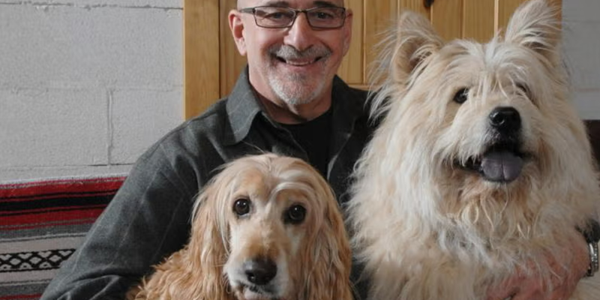Having a new puppy in your homestead is always lovely, but it can be challenging if you already have an older dog. Will they get along? Will your older dog be jealous of your younger dog?
This is typical when handling multi-dog household tips, and the fact that everyone requires answers to such questions shows that we are all learning and experiencing beyond being dog handlers and trainers.

Below is the process of introducing a puppy to an older dog that every owner should follow to make this transition less stressful.
The first thing to do before bringing the puppy is to create the right environment for success. Because your older dog is used to a specific routine, any changes will likely upset them.
Choose an area free of affiliations, such as a backyard or a park with no items of people's property around. This ensures that the older dog does not feel threatened by the presence of other dogs in the house.
You needed to control both dogs' wildness and tie them using a leash for safety. The two can observe each other from a distance with their nasal sides. Could you pay attention to their nonverbals? A happy tail, loose body language, or sniffing is okay. If the pups growl, hold stiff postures, or bark, they may require a longer time.
If the first meeting with the puppy is positive, you must take it home. Your older dog may become a bit territorial; thus, you must handle this aspect well. Allow the puppy 3-4 hours to roam around while the older dog is still controlled and kept an eye on. Avoid forcing interactions.
Baby gates or playpens should be installed so each dog has its play area. This helps to avoid overloading the older dog while allowing the puppy to adapt to the new home. Taking your time, especially when introducing a new pet, is also very important.
Food can be a significant trigger for conflict between dogs. Feed them in separate areas to prevent fights. Use this time to teach the puppy about respecting boundaries. Never let the puppy approach your older dog's food bowl.
You can also feed them simultaneously in different corners of the room. This reinforces positive associations during meal times, an essential multi-dog household tip.
Puppies can be full of energy, which might annoy an older dog. Supervise their play sessions to ensure things stay friendly. Teach the puppy to respect the older dog’s signals. For example, if your older dog growls or walks away, it’s their way of saying they need space.
Reward good behaviour to encourage calm interactions. Positive reinforcement helps both dogs feel secure and builds trust, making introducing puppies to older dogs easier.
Your older dog may not want to share their bed with a new puppy immediately. Set up separate sleeping spaces to keep things peaceful. A cosy crate for the puppy works well while your older dog sticks to their usual spot.
Separate sleeping areas reduce competition and give each dog a sense of security, which is key in any dog introduction guide.
Puppies learn by observing other dogs, so make sure your older dog sets a good example. Reinforce positive behaviours in both dogs with treats and praise. Teach the puppy basic commands like "sit" and "stay" to make interactions more manageable.
Suppose your older dog seems frustrated; redirect the puppy's attention. This will ensure that both dogs feel respected during the transition.
Your older dog might feel neglected when a new puppy gets all the attention. Balance your time to show them they’re still loved. Walks, playtime, and cuddles help reinforce their bond with you.

Meanwhile, the puppy should be given attention through training and socialization. Balancing your focus helps create harmony in your multi-dog household.
Every dog adjusts at their own pace. Some older dogs might take a few days to accept a new puppy, while others need weeks. Be patient and watch for signs of progress. Regularly reward both dogs for positive behaviour and continue monitoring their interactions.
If conflicts arise, don’t hesitate to consult a professional trainer. They can guide you on how to socialize dogs more effectively.
Introducing a new puppy to an older dog doesn't have to be stressful. With the right approach, patience, and consistency, both dogs can form a bond that lasts a lifetime. Start with a neutral meeting space, supervise their interactions, and give each dog space.
Whether introducing a puppy or navigating a multi-dog household, these steps will help you create a peaceful and loving environment for your furry friends.